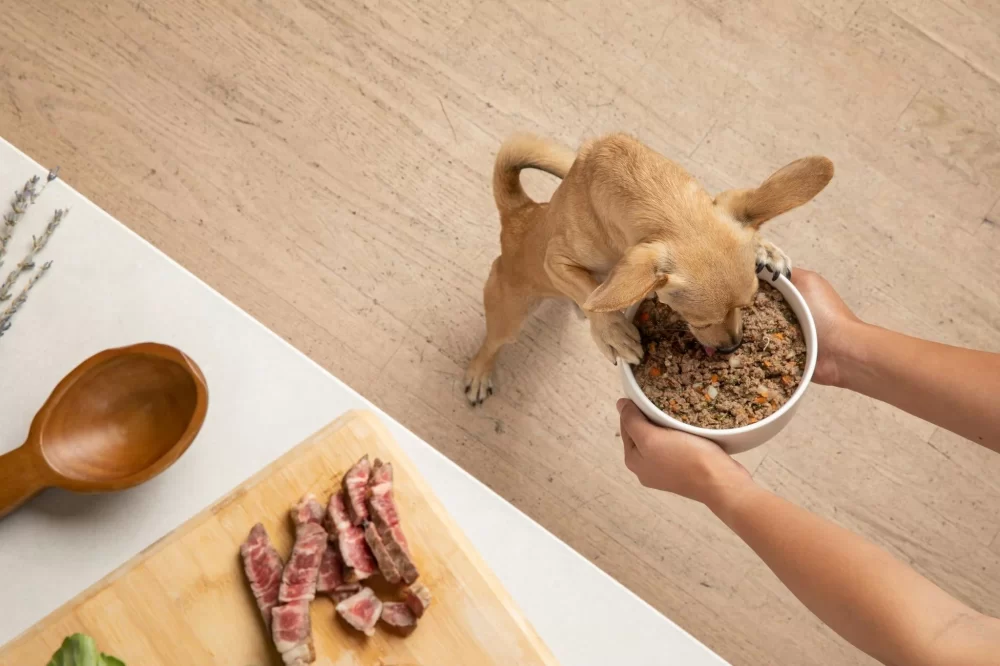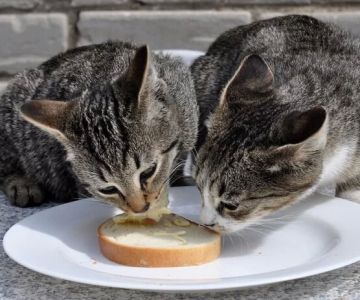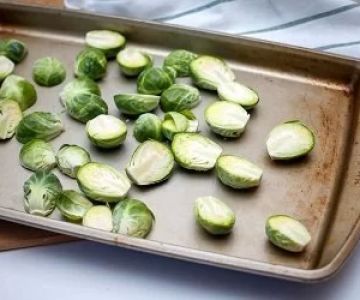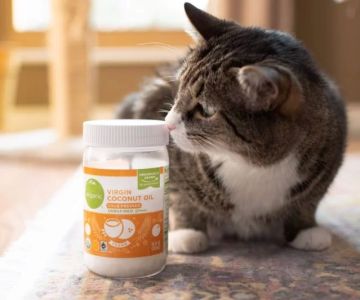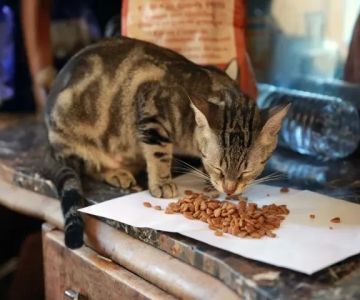Low-Fat Dog Food for Pancreatitis: A Life-Saving Diet for Your Furry Friend
If you've ever had a dog diagnosed with pancreatitis, you know how distressing it can be. The condition can cause severe discomfort and health issues, and managing it often requires a careful approach to diet. Pancreatitis in dogs occurs when the pancreas becomes inflamed, and the enzymes intended to aid in digestion begin attacking the organ itself. This can lead to a range of symptoms from vomiting and diarrhea to more serious, life-threatening conditions. As a pet owner, ensuring your dog receives the proper nutrition is key to helping them manage pancreatitis, and that’s where low-fat dog food comes into play.
When my dog, Bella, was diagnosed with pancreatitis, it was an emotional rollercoaster. Bella had always been energetic, happy, and full of life, but after her diagnosis, I noticed her energy levels dropping, and she wasn’t eating as much. The vet explained that one of the most crucial aspects of managing her condition would be switching her to a low-fat diet. In this article, I’ll share what I learned about low-fat dog food for pancreatitis, how it can benefit your dog, and the best options available to ensure your dog lives a long, happy, and healthy life.
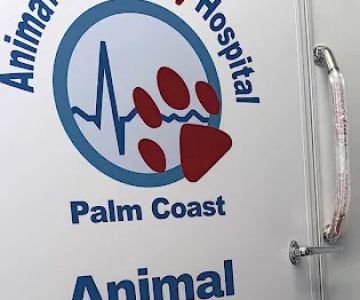
5650 State Rte (Route) 100 E, Town Center Blvd, Palm Coast, FL 32137, USA
See Details1. Why Low-Fat Dog Food Is Essential for Pancreatitis
Pancreatitis is caused by the inflammation of the pancreas, which disrupts its normal function. The pancreas is responsible for producing enzymes that help break down food, particularly fats. When a dog eats foods that are too high in fat, the pancreas can become overwhelmed, leading to further inflammation and damage. This is why a low-fat diet is often recommended for dogs with pancreatitis: it reduces the strain on the pancreas and helps prevent future flare-ups.
When Bella was first diagnosed, I learned that high-fat foods could exacerbate her condition. For example, many commercial dog foods contain fats that may not be easily digestible for dogs with pancreatitis, so it's crucial to choose a food that is low in fat but still nutritious enough to meet your dog’s dietary needs. This ensures that your dog’s digestive system can function properly without overburdening the pancreas.
2. How to Choose Low-Fat Dog Food for Pancreatitis
Not all low-fat dog foods are created equal, and it’s important to choose a product that provides the right balance of nutrients. When shopping for dog food for pancreatitis, keep the following factors in mind:
- Fat Content: Look for dog foods that have a fat content of less than 8-10%. This will help reduce the risk of further inflammation in the pancreas.
- High-Quality Proteins: Make sure the food contains easily digestible proteins like chicken, turkey, or fish. These proteins will provide the necessary building blocks for muscle repair and overall health.
- Carbohydrates: Foods with higher levels of easily digestible carbohydrates, such as rice or sweet potatoes, are often ideal for dogs with pancreatitis. These provide energy without adding excess fat.
- Fiber: Fiber is essential for digestion, and it can help regulate bowel movements, which is especially important for dogs with pancreatitis who may suffer from gastrointestinal upset.
- No Artificial Additives: Avoid foods that contain artificial preservatives, colors, or flavors. These can irritate the stomach and exacerbate pancreatitis symptoms.
For Bella, I spent time researching and reading labels to make sure I was selecting the best food. I also consulted with her vet to ensure I was choosing a product that met her specific health needs.
3. The Best Low-Fat Dog Foods for Pancreatitis
Now that we understand the importance of low-fat dog food for pancreatitis, let's look at some of the top options available on the market. These foods have been specifically formulated to support dogs with pancreatitis while providing essential nutrients for overall health.
1. Hill’s Prescription Diet i/d Low Fat Canned Dog Food
Hill’s Prescription Diet i/d Low Fat Canned Dog Food is one of the most highly recommended options for dogs with pancreatitis. It’s formulated to be low in fat and easy to digest, making it an ideal choice for dogs who have sensitive stomachs. The food contains prebiotic fiber to support digestive health and a blend of antioxidants to help boost your dog’s immune system. I found that Bella loved the taste of this food, and it helped her feel much better within a few weeks of switching.
2. Royal Canin Veterinary Diet Canine Low Fat Formula
Royal Canin Veterinary Diet Canine Low Fat Formula is another excellent choice for dogs with pancreatitis. This formula is specifically designed to support dogs with digestive issues by providing balanced nutrition with low fat content. The food includes high-quality protein sources, like chicken, and is enriched with omega-3 fatty acids to help support skin and coat health. Royal Canin also offers a kibble option, which is perfect for dogs who prefer dry food over wet food.
3. Blue Buffalo Natural Veterinary Diet Weight Management + Pancreatic Support
Blue Buffalo’s Natural Veterinary Diet is another great low-fat food for pancreatitis. This food is designed to support both weight management and pancreatic health, making it an excellent option for dogs dealing with pancreatitis. It includes high-quality chicken as the main protein source and is free from artificial flavors and preservatives. The added fiber helps support digestive health, and it’s also enriched with antioxidants to help strengthen your dog’s immune system.
4. Nutro Ultra Grain-Free Weight Management Dry Dog Food
Nutro Ultra Grain-Free Weight Management Dry Dog Food is another option I found to be helpful for Bella. This food is free from grains and contains a balanced blend of protein, fiber, and low-fat ingredients. The formula includes omega fatty acids to promote a healthy coat and skin, as well as high-quality ingredients like chicken, lamb, and salmon. Bella seemed to enjoy the kibble, and it helped maintain her weight while keeping her pancreatitis symptoms under control.
4. Transitioning to Low-Fat Dog Food
Switching your dog’s food to a low-fat formula for pancreatitis requires careful planning. When Bella first started her new diet, I gradually mixed the new food with her old food to avoid upsetting her stomach. It’s essential to make the transition slowly, over the course of about 7-10 days, to give your dog’s digestive system time to adjust. Start by mixing 25% of the new food with 75% of the old food, and gradually increase the amount of new food each day until you’ve fully transitioned.
Throughout this transition, monitor your dog closely for any signs of digestive upset, such as vomiting or diarrhea. If you notice any issues, consult your vet, who can guide you on adjusting the diet accordingly.
5. Supporting Your Dog’s Recovery with a Healthy Lifestyle
In addition to feeding your dog low-fat food, maintaining a healthy lifestyle is essential for managing pancreatitis. Regular exercise, appropriate weight management, and avoiding high-fat treats are all important parts of the overall approach to keeping your dog healthy. Bella’s recovery wasn’t just about her food—it was also about her daily routines, keeping her stress levels low, and ensuring she received plenty of love and attention to keep her spirits high.
Managing pancreatitis can be challenging, but with the right food and care, your dog can lead a healthy, happy life. It’s all about finding the right balance between nutrition, exercise, and regular vet check-ups. Bella is doing much better today, and I’m confident that her new diet is a big part of her recovery. If you have a dog dealing with pancreatitis, I highly recommend exploring low-fat food options to help them thrive.

